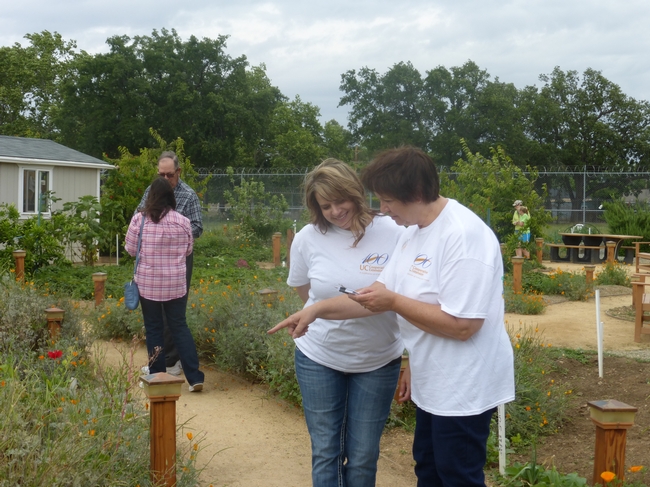
For the Be a Scientist project, school children, families, community groups and individuals went online to answer three questions: Where is food grown in your community? How are you conserving water? How many pollinators do you see?
People as far north as Del Norte County and as far south as Imperial County participated:
- 10,697 people counted pollinators, including bees, butterflies, birds and even a few bats. (These numbers cannot be added to determine total participants because people could answer more than one question.)
- 9,989 people posted on the map where food is grown in their community – from backyard fruit trees to school gardens to farms
- 8,314 people told how they are conserving water – such as taking shorter showers or letting their lawns turn brown
“It's encouraging to see so many Californians interested in pollinators because they play a vital role in producing food,” said Barbara Allen-Diaz, UC vice president for agriculture and natural resources. “People are conserving water in many different ways, which is important because water is a limited resource even in non-drought years. And, surprisingly, almost half of the people participating in our survey said they grow food.”
Preliminary results show that people counted 37,961 pollinators in a three-minute period. Flies were by far the most abundant, accounting for 79 percent of the pollinators counted.
While most Californians get their food from a store, 45 percent of those responding to the UC survey said they grow their own food too. One-third of the people responding said they get their food only from a store.
To save water, 62 percent of the participants are watering less.
Many people uploaded photos of gardens, pollinators and themselves along with their observations on the map. For details about the survey, visit http://beascientist.ucanr.edu to view the maps and reports.
The statewide science project was part of UC Cooperative Extension's 100-year anniversary celebration. On May 8, 1914, President Woodrow Wilson signed the legislation creating the system to connect scientific advances in agriculture, nutrition and natural resources from public land-grant universities and communities in each state.
“We will continue to celebrate a century of UC Cooperative Extension and its benefits to Californians with events around the state throughout the year,” said Allen-Diaz.
For more information about the UC Cooperative Extension centennial, visit http://ucanr.edu/100.